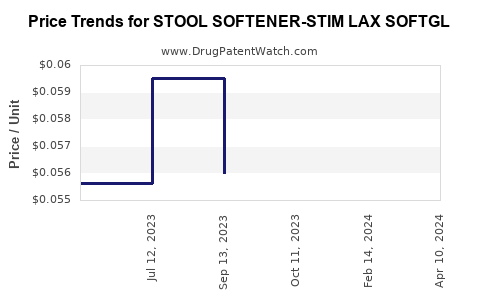Drug Price Trends for STOOL SOFTENER-STIM LAX SOFTGL
✉ Email this page to a colleague

Average Pharmacy Cost for STOOL SOFTENER-STIM LAX SOFTGL
| Drug Name | NDC | Price/Unit ($) | Unit | Date |
|---|---|---|---|---|
| STOOL SOFTENER-STIM LAX SOFTGL | 70000-0442-01 | 0.06542 | EACH | 2024-11-20 |
| STOOL SOFTENER-STIM LAX SOFTGL | 70000-0442-01 | 0.06436 | EACH | 2024-10-23 |
| STOOL SOFTENER-STIM LAX SOFTGL | 70000-0442-01 | 0.07109 | EACH | 2024-09-18 |
| STOOL SOFTENER-STIM LAX SOFTGL | 70000-0442-01 | 0.07305 | EACH | 2024-08-21 |
| STOOL SOFTENER-STIM LAX SOFTGL | 70000-0442-01 | 0.07208 | EACH | 2024-07-17 |
| STOOL SOFTENER-STIM LAX SOFTGL | 70000-0442-01 | 0.06340 | EACH | 2024-06-19 |
| >Drug Name | >NDC | >Price/Unit ($) | >Unit | >Date |


